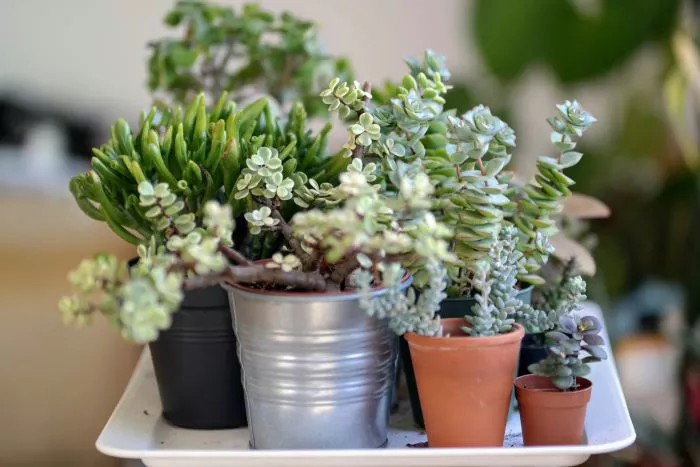Succulents are beloved for their unique beauty and low maintenance requirements. One of the most rewarding aspects of caring for succulents is the ability to propagate them from trimmings. Growing succulent trimmings is an excellent way to expand your collection or share plants with friends. This article will explore the process of growing succulent trimmings, the best practices for success, and tips for caring for your new plants.
Understanding Succulent Trimmings
Succulent trimmings refer to cuttings taken from the leaves or stems of existing succulent plants. These cuttings can grow into new, healthy plants when given the right conditions. Succulents are well-suited for propagation because they have the ability to store water in their leaves and stems. This adaptation allows them to survive in arid environments and makes them resilient during the propagation process.
Choosing the Right Trimmings
The first step in growing succulent trimmings is selecting the right parts of the plant. Healthy trimmings will ensure a higher success rate. Here are some tips for choosing the best trimmings:
Select Healthy Plants: Always choose trimmings from healthy, well-established plants. Avoid plants that show signs of disease or pest infestation.
Choose the Right Type of Cutting: You can propagate succulents from both leaf and stem cuttings. Leaf cuttings work well for many varieties, such as Echeveria and Sedum. Stem cuttings are suitable for plants like Crassula and Jade.
Look for Plump Leaves or Sturdy Stems: Select mature leaves or robust stems that are firm and free from damage. Avoid using shriveled or discolored leaves.
Preparing the Trimmings
Once you have selected the appropriate trimmings, it is essential to prepare them correctly. This preparation helps to reduce the risk of rot and encourages healthy root development. Follow these steps to prepare your trimmings:
Make Clean Cuts: Use sharp, clean scissors or a knife to make your cuts. This reduces the risk of introducing bacteria or pathogens to the plant.
Allow Callousing: After cutting, place the trimmings in a dry area for a few days. This allows the cut ends to callous over. Callousing is crucial as it helps prevent rot when the cuttings are placed in soil.
Avoid Direct Sunlight: Keep the trimmings in a shaded area during the callousing process. Direct sunlight can cause the cuttings to dry out too quickly.
Planting the Trimmings
After the trimmings have calloused, it is time to plant them. Proper planting techniques will promote healthy growth. Here are the steps to follow:
Choose the Right Soil: Use a well-draining soil mix specifically designed for succulents. A cactus mix or a blend of potting soil and sand works well.
Prepare Containers: Select pots with drainage holes to prevent water accumulation. Small pots or trays are ideal for starting multiple cuttings.
Plant the Cuttings: For leaf cuttings, lay the cut end on top of the soil without burying it. For stem cuttings, insert the cut end into the soil, ensuring it is secure.
Water Sparingly: After planting, lightly mist the soil to keep it slightly moist. Avoid soaking the soil, as excess moisture can lead to rot.
Provide Indirect Light: Place the containers in a location with bright, indirect sunlight. Too much direct sunlight can stress the cuttings and hinder root development.
Caring for Growing Succulent Trimmings
Once your succulent trimmings are planted, proper care is essential for successful growth. Here are some tips for nurturing your new plants:
Monitor Watering: Allow the soil to dry out completely between waterings. Overwatering is a common mistake that can lead to rot. Check the soil moisture by feeling it with your finger.
Adjust Light Exposure: After a few weeks, gradually introduce the cuttings to more direct sunlight. Start with a few hours of morning sun and increase exposure over time.
Be Patient: Root development can take time. Depending on the species and environmental conditions, it may take several weeks for roots to form. Be patient and avoid disturbing the cuttings during this period.
Fertilizing: Wait at least a month before fertilizing your new plants. When you do fertilize, use a diluted, balanced fertilizer designed for succulents.
Transplanting: Once the cuttings have established roots and new growth appears, consider transplanting them into larger pots if necessary. This will give them more space to grow.
Common Challenges and Solutions
While growing succulent trimmings is generally straightforward, you may encounter some challenges. Here are a few common issues and how to address them:
Rotting Cuttings: If your cuttings begin to rot, it is often due to overwatering. Ensure that the soil is well-draining and allow it to dry out between waterings.
Etiolation: If your cuttings stretch toward the light and appear leggy, they may not be receiving enough sunlight. Gradually increase their exposure to bright, indirect light.
Pests: Keep an eye out for pests such as mealybugs or aphids. If you notice any infestations, treat them promptly with insecticidal soap or neem oil.
Conclusion
Growing succulent trimmings is a rewarding and enjoyable process. By selecting healthy trimmings, preparing them properly, and providing the right care, you can successfully propagate new plants. Whether you are expanding your collection or sharing with friends, the joy of watching your succulents thrive is unmatched. With patience and attention, your succulent garden can flourish, bringing beauty and life to your home.


